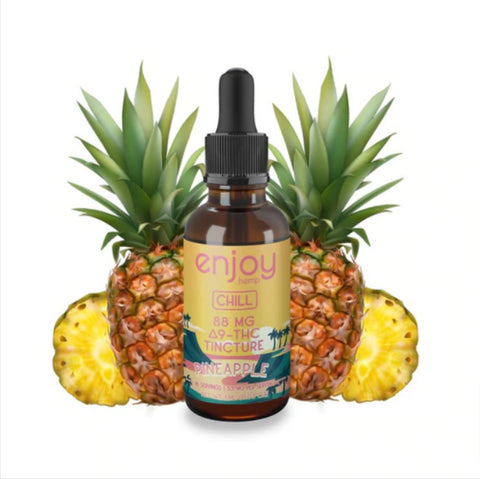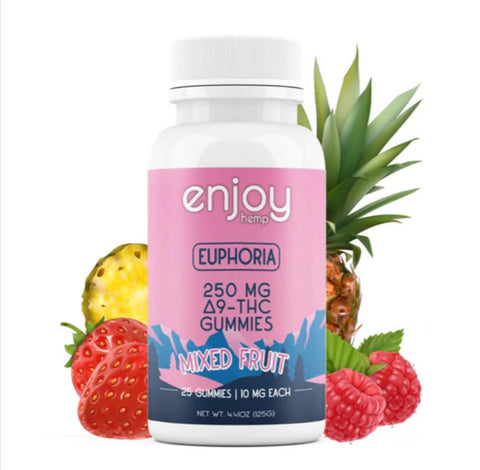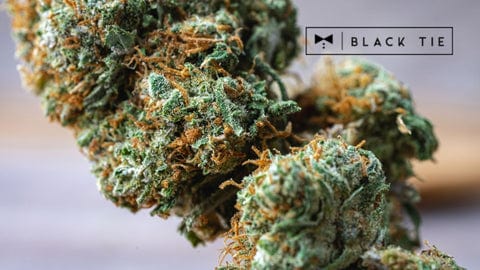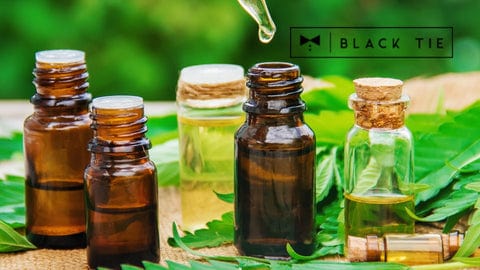Outdated Cannabis Classification System
The days of an outdated and frankly inaccurate cannabis classification system are finally over. The market has blurred the lines between quality and craft cannabis for far too long - leaving customers and cultivators with no real roadmap to identify the range and spectrum of the medicinal possibilities contained within cannabis and the unique entourage effects possible from the diversity that it offers.
Experts consider Cannabis Indica, Sativa, and Hybrid the three main subspecies - the issue is that people have used the THC potency of strains to determine superiority. Measuring potency and the effects with this method is a long-outdated classification system, especially when it does not provide accurate labels for customers and budtenders alike. The words “Indica” and “Sativa” were introduced in the 18th century to describe different species of cannabis, but modern research has led to more information that we will share throughout this article.
Historically, this is how cannabis has been defined;
Strains
Cannabis Sativa
Sativa is supposedly uplifting and cerebral, enhancing creativity and productivity. Indicas provide what has been called a “body high,” while Sativa’s deliver more of a “mind high.” Unfortunately, Sativa plants require longer to grow and yield less medicine (flowers) than Indica varieties. Sativa’s smell sweet, fruity, or spicy. This difference in the aroma results from terpenes, the molecules within the plant that are cousins to cannabinoids like THC and CBD. While these chemicals sometimes provide stunningly pungent odors, their greatest benefit to patients is their medicinal efficacy.
The problem with the general ‘idea’ of what a Sativa does, is that there is no accurate spectrum representing an understandable visual for growers and customers to understand easily.
Cannabis Indica
The typical example of Cannabis Indica is a more compact, thick-stemmed bush than its cousins, usually reaching a height of fewer than two meters. The foliage is generally a dark shade of green, some examples appearing to have almost blue or green-black leaves. These leaves are composed of short, wide blades.
Most Indicas are supposedly a rich source of the cannabinoids THC, CBD, and CBN. While Cannabis Sativa often produces a higher proportion of THC than its other cannabinoids, Cannabis Indica usually contains significant levels of all three. Indicas tend to have more body-centered effects than Sativas – enhancing physical sensations, which is not accurately measured either.
Cannabis Hybrids
Typically, a Hybrid is a cannabis plant with Indica and Sativa characteristics. Because cannabis has been cultivated for centuries, most modern strains are hybrid. Pure Sativas and pure Indicas are rare, so most cannabis you'll find these days is a hybrid.
Hybrid strains typically develop either Sativa-dominant, Indica-dominant, or evenly balanced phenotypes. Strain descriptions usually list it that way or display the split as a percentage. Remember that the terms Indica and Sativa strains are most useful for cultivators in determining growth characteristics like how tall plants will grow or how long their flowering cycle will be. Effects share no apparent connection with today's cannabis plants' physical structure, hence why the classification system is largely outdated.
So why is this a problem?
According to SC labs (SC Labs is a company that offers comprehensive solutions for cannabis and hemp testing) co-founder, Josh Wurzer;
“The problem is that there is little standardization when it comes to defining and determining terpenes”
Measuring the superiority of cannabis is confusing, and frankly, the classification system is completely outdated. It no longer only comes down to the strain. The days of just searching out the highest THC totals are rapidly receding. Research has proven that terpenes are at the base of the entourage effect, where previously, it has been considered ‘minor’ information. Cannabis growers and breeders have been assigning labels to cultivars primarily based on aroma profiles and purported effects rather than genetic ancestry or overall chemical similarity. Cultivators, processors, retailers, and consumers could benefit from greater standardization when evaluating product quality and distinguishing label claims.
Because cannabis is a widely used substance increasingly being legalized for medicinal and recreational use, Cannabis’s genetic and chemical variation must be accurately quantified and communicated. Using strain labels like Sativa and Indica are used to describe a cultivar’s morphology, aromas and/or psychoactive effects. However, whether these labels capture meaningful information about Cannabis's genetic and chemical variation is incredibly unclear. This leaves room for inaccuracy and uncertainty in a world growing in popularity faster than any other industry.
In this study, the inaccuracy of reporting is clear;
“This is consistent with previous studies indicating that cultivar names were not reliable indicators of a sample’s genetic or chemical identity”
The study shows that the genetic structure of cannabis explained only 37% of the variance in labeling, meaning that Sativa–Indica labels do not accurately reflect genetic relatedness. When the study looked at the correlation of Sativa and Indica terpenes and cannabinoids, Sativa content was positively correlated with the concentrations of bergamotene and farnesene. While on the other hand, there were significant positive correlations between Indica labeling and three sesquiterpenes: guaiol, γ-eudesmol, and β-eudesmol. This shows that it goes far beyond mere classification, and it really comes down to far more than simple labels.
The contrasting aromas that have been associated with Sativa (that is, sweet) and Indica (that is, earthy) were key discriminators in a sensory evaluation of Cannabis cultivars and mediated customers’ perceptions of potency and quality.
What is the solution?
Simple; replace the three vague classes with six elaborate and detailed classifications instead. On February 16th, – SC Laboratories, Inc., (SC Labs) announced that it has licensed Napro Research LLC’s proprietary data visualization tool PhytoFacts®. Clients testing cannabis through the lab will now have access to this game-changing reporting format and algorithm that provides a visual profile of each strain’s chemical makeup. This new report format is intuitive and helps budtenders and consumers identify the right strain for their desired effect. As mentioned above, the terpene profile proves to be far more important than the breed of cannabis, which means that companies like SC Labs are putting an end to the days of simply seeking out the highest THC percentage. Science has converged to finally prove that terpenes are at the root of the entourage effect that consumers are seeking.
Always looking to level their playing field and eliminate as much bias as possible, SC labs' owners partnered with the event organizers of Emerald Cup and NAPRO research to help reframe the conversation regarding what defines “quality” in cannabis. The Emerald Cup is widely believed to be the World Series of Cannabis competitions as it is rooted in Humboldt County. The partnership is intended to help revolutionize the collective understanding of the true role of terpene content.
The new classification system focuses on sorting flower entries by primary terpene content, leveraging a combined decade of research into Cannabis phytochemistry between PhytoFacts® coupled with a powerful database of over 250,000 terpene tests and aggregated by SC Labs, going back to their launch of terpene testing on Cannabis in 2013 as you can see below.
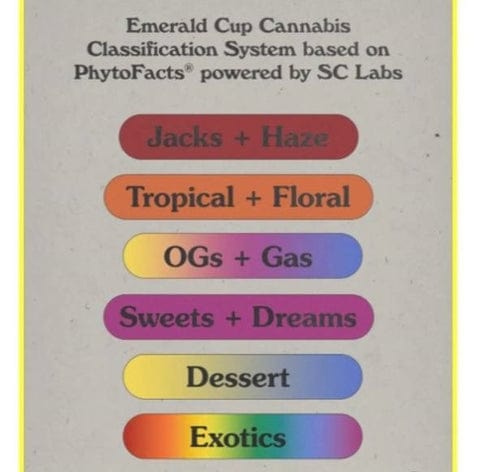
What are the new classes?
‘Jacks + Haze’ Class
- Mostly ‘Sativa’-leaning varietals
- Tasting notes – Fruity, Pinesol, Haze
- Effects – Energizing, Cerebral, Artistically Inspiring
- Common Cultivars – Classic Trainwreck, Jack Herer, Durban Poison, Super Lemon Haze
- Terpenes Profile: Terpinolene, Caryophyllene, Myrcene
‘Sweets + Dreams’ Class
- Mostly ‘Indica’-leaning varietals
- Tasting Notes – Fruity, Sweet, Woody, Hoppy, Herbaceous
- Effects – Relaxation, Couch Lock, Analgesic
- Common Cultivars – Blue Dream, Tangie, Forbidden Fruit, Grandaddy Purple, Purple Urkel, Grape Ape, Cherry AK, God’s Gift, Purple Punch
- Terpenes Profile: Myrcene, Pinene, Caryophyllene
‘Tropical + Floral’ Class
- Mostly ‘Indica’-leaning varietals
- Tasting notes – Sweet, Floral, Tropical Fruit
- Effects – Calming, Soothing, Relaxing
- Common Cultivars – Super Skunk, Hawaiian, In the Pines, Dream Queen
- Terpenes Profile: Ocimene, Myrcene
‘OGs + Gas’ Class
- True ‘Hybrid’ varietals
- Tasting Notes – Gas, Fuel, Sweet, Citrus, and Pepper
- Effect – Uplifting, Stimulating, Analgesic, Relaxation
- Common Cultivars – Classic OG Kush, Chemdog, Sour Diesel, Gorilla Glue
- Terpenes Profile: Any combination or shifting codominance of Caryophyllene, Limonene, Myrcene
‘Exotics’ (Rare Terpene Combinations) Class
- True ‘Hybrid’ varietals
- Tasting notes – varied based on chemistry of entry
- Effect – varied based on chemistry of entry
- Common Cultivars – rarest terpene profiles entered into the Emerald Cup Competition
‘Desserts’ Class
- True ‘Hybrid’ varietals
- Tasting Notes – Deserts, Doughs, Citrusy & Spicy
- Effects – Stimulating, Racy, Uplifting, Comforting
- Common Cultivars – Classic Bubba Kush, GSC, Gelatos, Cakes
- Any shift in codominance of Caryophyllene & Limonene
How We’re Using The New System
Because of the reliability and shift in the right direction, Black Tie CBD has made use of the latest testing for our ‘ChemDawg’ strain, as you can see below;
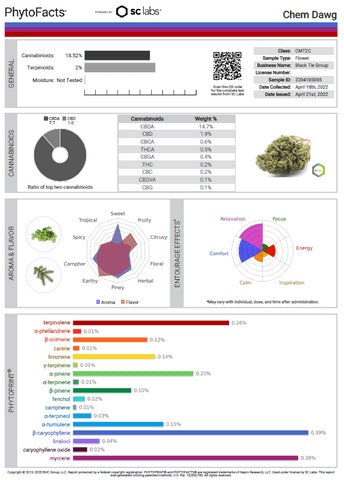
As you can see from the report produced by PhytoFacts®, there’s immense detail about the aroma & flavor, identifying the spectrum of profiles in depth. The particular aroma and tastes lean far more towards earthy with some sweet and fruity profiles. Similarly, the entourage effect is highlighted, giving the budtender or end-user a clear idea of its effects. The relaxation and comfort of the strain are highlighted, with lower energy levels. The report is easy to understand and interpret, and above all the classification is distinct without being confusing.
This goes to show how important terpenes really are, and how the entourage effect varies depending on multiple facets which are not usually shown - including highlights of b-Caryophyllene (3.943 mg/g), Myrcene (3.767 mg/g), Terpinolene (2.605 mg/g). The relevance of highlighting terpenes matters significantly because terpenes have also been identified as a new frontier in cannabis medicine. Until recently, the spotlight has been focused almost exclusively on the therapeutic qualities of cannabinoids, such as THC and CBD, but as our understanding of terpenes grows more sophisticated, it’s becoming apparent that these aromatic compounds are medicinal powerhouses too.
β-Caryophyllene: β-Caryophyllene is generally the most common sesquiterpene in cannabis, and the most abundantly produced terpene in Nature. Over the last decade, it has gained scientific attention after discovering that it can directly activate cannabinoids receptors. Basically, the β-Caryophyllene terpene acts as a cannabinoid.
This is the terpene that contributes to the ever-so-slight spicy flavor, but mainly to the earthy profiles as well as the relaxation quality of this strain.
Myrcene: Myrcene is the most abundant terpene in modern commercial cannabis. Myrcene has many therapeutic benefits. Like other terpenes, myrcene is believed to have potential anti-inflammatory, potential anti-tumor, sleep-supportive, and other health benefits.
Myrcene characteristically gives our cannabis strain a mildly sweet flavor profile and provides scent notes that are spicy, earthy and muskiness - and also contributes towards that relaxing and calm effect that was mentioned.
Terpinolene: Terpinolene, a terpene dominant in about one in ten cannabis strains, is recognized for its woody smell combined with floral citrus notes. In addition to its fresh aroma, terpinolene is known for its antifungal and antibacterial properties. Terpinolene is considered more multidimensional in comparison to other cannabis terpenes.
These combined effects and profiles of terpinolene are why there are more fruity aromas and comforting effects. The combination of all three highlighted terpenes should indicate the importance of a more accurate and science-backed classification system to ensure that all effects, aromas and profiles are accounted for.
Without having to handle the substance, users and budtenders can now have a true discourse about the desired flavor, fragrance, and potential effects of cannabis. Consumers may now finally buy cannabis online with ease thanks to the new classification system and PhytoFact® information.






